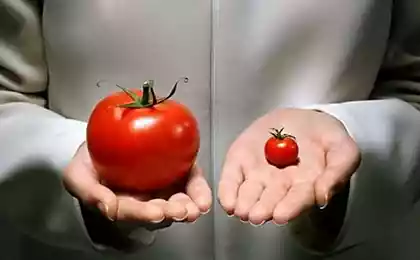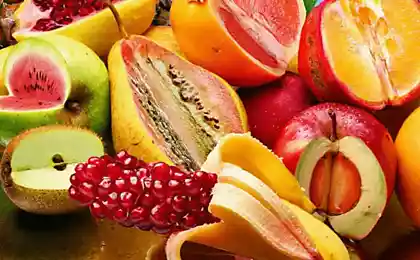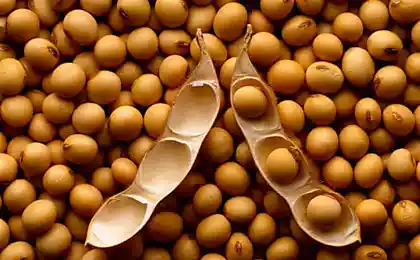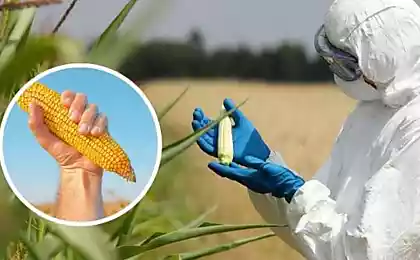225
A GMO-free home
The first supply of genetically modified products to the Russian market began 14 years ago. Uncontrolled aggressive introduction of genetically modified crops and organisms in food production and agriculture has caused a strong reaction from scientists and public organizations. It was then that the idea of creating “GMO-free zones” was first announced. GMO-free can be both entire countries and your own apartment. The cultivation of GM crops, distribution and any use of genetically modified products are prohibited in this zone. In Europe, more than a hundred regions, thousands of municipalities and farmers declared themselves GMO-free. Austria, Venezuela, Greece, Poland and Switzerland are transgenic-free countries. Russia is not left out: scientists and public organizations are actively working on the creation of biologically safe areas throughout the country. Your home can also be a GMO-free place.
How to do this, says Alexander Sergeevich Baranov, President of the National Association of Genetic Safety.
Alexander Sergeyevich, at the family council we decided: we want our house to become a GMO-free zone. Where to start? First of all, you should give up eating and using GM foods. Make it a rule to be attentive to everything you buy in the store and in the market. Pay attention to the data on the label. Avoid products that include soy-based components: soybean flour, tofu cheese, soybean oil, lecithin (E322), hydrolyzed vegetable protein (it is added to many dairy products: cheeses, yogurt, cottage cheese and others), as well as corn-based components: corn flour, popcorn, muesli, potato chips and so on. Ready breakfasts often contain additives made using genetically modified microorganisms. In several varieties of honey, traces of transgenic structures of GM rapeseed were also found. If the label says "imported honey" or "manufactured in several countries", leave this jar in the store. If possible, give preference to organic, natural products that can be bought in special stores and from your verified village grandmothers on the market. They are guaranteed not to contain GM ingredients, food additives, heavy metals, radionuclides, mycotoxins, hormones, antibiotics and other hazardous components. Avoid fast food restaurants, semi-finished products and cheap products, as they are most often found in ingredients obtained using genetically modified organisms. Homemade bread and pastries, dairy products from their cows and goats, vegetables and fruits grown in the country are much safer and healthier than those obtained from global industrial production and processing. Bake homemade bread from flour of domestic varieties of hard wheat grown in the Altai and Krasnodar regions, Saratov and Rostov regions. In large quantities, GM rice and its products are imported to us. Be careful when buying meat and milk. These products can be obtained from animals raised on feed prepared from GM plants. Such products are not labeled, while in European countries it is indicated on the label. Back in 2004, scientists from the Center for Dairy Control at the Munich University of Technology in Bavaria discovered that there were inserts of GM structures in the milk of cows fed GM feed. Scientists have found that genetically modified fragments enter the milk, but how this happens, they still can not understand. Very delicate and expensive experiments are needed.
How is GM feed controlled in our country? Not really. Almost all animal feed that exists on our market is mainly feed obtained from transgenic crops and imported to us from abroad. We have repeatedly found transgenic components in our laboratories that were not labeled by suppliers. Our sheep, piglets, cows, birds calmly eat them, and how this affects their physiological state, and how meat, milk and eggs taken from them affect our health no one will tell you. No one in the world conducts research in this area. At the last Terra Madre World Forum of Environmental and Safe Agricultural Producers in Italy, which brought together 8,000 representatives from all over the world, I was asked a specific question: “Tell me, have Russian scientists investigated the effects of GM feed on farm animals and GM products derived from such animals on humans?” I replied that I was not aware of such work in our country. The Canadian delegation said: This is a global problem. In Canada, where most transgenic crops are grown, we noticed that GM feed consumption clearly affects pig fertility. They have almost twice as many piglets in their litter. Moreover, piglets differ in size and health, there is a large mortality rate in the first days of life.” So it is imperative to investigate this issue.
The Moscow government in the law “On food security of the city of Moscow” (July 12, 2006 No. 39) introduced the label “Does not contain GMOs”. Does that give you any guarantees? A complex and ambiguous question. Not only in Russia, but nowhere in the world has the dose of human dependence on the use of GM components been determined. How much do you need to eat GM food to make us really sick? Nowhere in the world, I emphasize, there is such data. And it's not coming anytime soon. Prior to November 2007, our legislation stipulated that any number of GM ingredients found in a product must be labelled. But thanks to the lobbying of certain manufacturers and companies, an amendment was passed for these unfortunate and unspeakable 0.9 percent. They say that this is done to make our legislation more harmonized with the European one. But in Europe, this 0.9 percent was introduced not because of the good life, but because the cultivation of these GMOs has already begun genetic contamination. Genetic contamination is what prompted the European Food Safety Commission to introduce this norm – they have GM inserts, you might say, floating in the air. In November 2007, we actually took two steps back, introducing the 0.9%. In Russia, there is no law prohibiting the cultivation of transgenic plants in our fields, but there is a procedure for registration, obtaining a cultivation permit, environmental expertise, which have not yet allowed any GM plants to break into our fields. We were, you could say, very lucky. In this respect, we are an environmentally friendly country, that is, we have no genetic contamination. But again, this is all very arbitrary. After all, transgenic crops are already being grown in the immediate vicinity of us, namely in Ukraine. And, perhaps, there has already been overpollination of such crops as rapeseed, soybeans. Did anyone care about that in any way? Are Russian fields being checked in the border areas with Ukraine? Do we have such a “genetic service” as, for example, in Serbia, which checks fields and burns them out if transgenic plants are found? We have to state with deep regret that no one conducts a total inspection!
What about our scientists? I know a circle of scientists who care about this and are willing to do serious research. But for a long full-fledged experiment you need at least 500 thousand dollars. This is the amount without paying for the work of specialists, only the technical support of the experiment. Scientists are willing to work for free. World experience shows that we, ordinary citizens, can significantly influence the situation with GMOs. The CIS countries have already adopted laws on genetic and biological safety. Committees of the same name have been established. As I said, there is a special service in Serbia that regularly goes to the fields, takes samples and checks for genetic contamination. You can't do that! We've learned how to make genetic constructs and insert them into the genome of living organisms, but we haven't learned how to extract them from there. The danger is too serious to be dismissed. Look, in Switzerland, after all, gathered and held a referendum on the ban on the cultivation and use of GM products, all citizens voted for it. They said we don't want to eat transgenes, and Switzerland declared itself a GMO-free zone. They're not against science and genetic engineering per se, they're just convinced that we need to investigate the negative side of GMOs first. After all, we are only told about the pluses. And are these “pros” of being then outweighed by irreversible “cons”? Until the point of no return is reached, perhaps it is worth slowing down and thinking carefully and exploring everything, and only then going forward along the path of “progress”?
Authors: Katerina Perkhova, Marina Kudasheva.
Source: /users/104






















